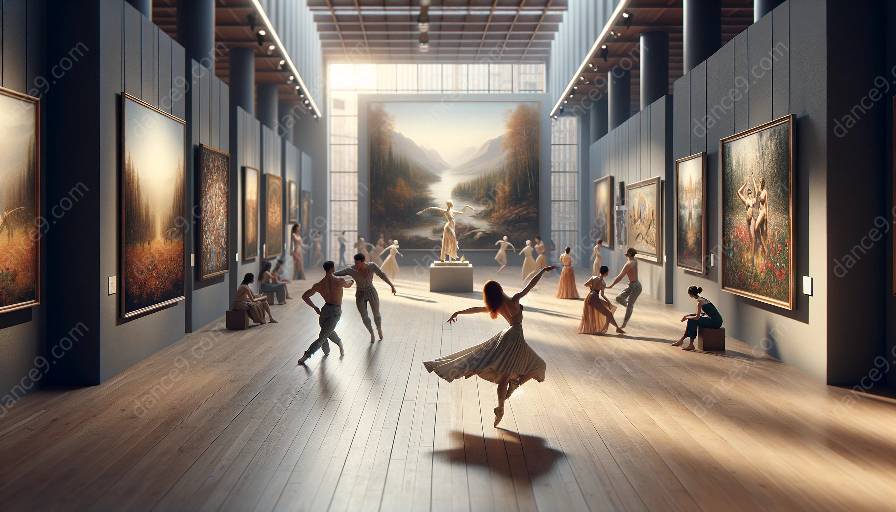Contemporary dance is a dynamic and evolving art form that is deeply influenced by cultural diversity. As a global art form, dance reflects the diversity of human experience, and this diversity is manifested in various styles, techniques, and themes.
Cultural diversity has a profound impact on contemporary dance, shaping the movement vocabulary, choreographic approaches, and thematic inspirations. The fusion of diverse cultural elements enriches the creative landscape of contemporary dance, fostering innovation and cross-cultural dialogue.
The Intersection of Dance and Visual Arts
The intersection of dance and visual arts provides a fertile ground for the exploration of cultural diversity. Through interdisciplinary collaborations, dancers and visual artists are able to integrate diverse cultural perspectives, traditions, and visual aesthetics into their creative works.
Visual arts, including painting, sculpture, and multimedia installations, serve as both sources of inspiration and integral components of dance performances. This interdisciplinary synergy not only enriches the artistic expression but also offers audiences a multi-sensory experience that transcends cultural boundaries.
The Significance of Cultural Diversity in Dance
Cultural diversity infuses contemporary dance with a rich tapestry of movement traditions, storytelling techniques, and symbolic gestures. By embracing diverse cultural influences, dancers and choreographers create works that resonate with universal themes while celebrating the uniqueness of various cultural expressions.
Furthermore, the incorporation of cultural diversity in dance serves as a platform for social, political, and historical commentary. Through performances that reflect diverse cultural narratives, contemporary dance becomes a powerful medium for promoting understanding, empathy, and unity across different communities.
The Impact of Cultural Diversity on Dance
The impact of cultural diversity on dance extends beyond artistic expression, influencing pedagogy, training methodologies, and audience engagement. Dance institutions and educators recognize the importance of exposing students to a wide range of cultural dance forms, fostering a holistic understanding of the art and celebrating the contributions of diverse dance traditions.
Moreover, the integration of cultural diversity in dance productions and programming broadens the accessibility and relevance of dance to a global audience. This inclusive approach not only diversifies the representation of dance but also catalyzes a more comprehensive appreciation of cultural heritage and contemporary artistic innovation.
Conclusion
In conclusion, cultural diversity significantly shapes the landscape of contemporary dance, influencing its artistic vision, collaborative possibilities, and societal impact. The intersection of dance and visual arts provides a platform for the celebration of cultural diversity, fostering a vibrant discourse that reflects the nuanced tapestry of human experience.
By acknowledging the significance of cultural diversity in dance, we embrace a more inclusive and expansive understanding of this art form, contributing to the enrichment of our collective artistic expression and cultural heritage.











































